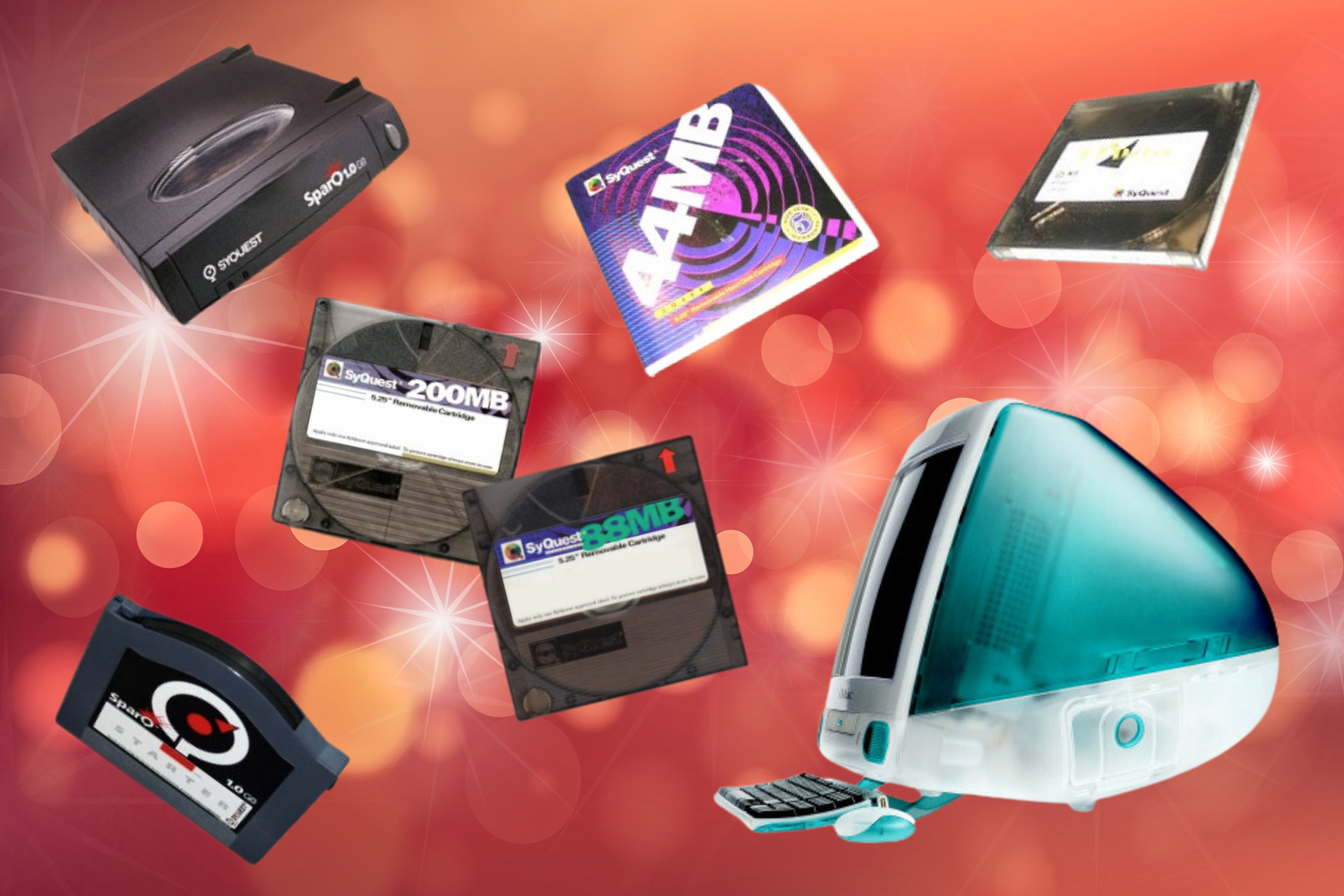Tech Time Machine: A Designer's Journey Through '90s Technology
Hey there, fellow design enthusiasts! Let's take a fun trip down memory lane to when being a graphic designer meant wrestling with some pretty fascinating (and sometimes frustrating) pieces of technology.
The Storage Saga
Remember the satisfying *chunk* of inserting a SyQuest disk? These chunky cartridges were the crown jewels of our design arsenal in the early '90s. At a whopping 44MB (later 88MB!), they felt like infinite space for our Photoshop files—well, at least until we added that one extra layer.
Then came the Zip Drive – Iomega's sleeker, more sophisticated answer to our storage woes. That distinctive whirring sound as it spun up still echoes in my dreams. 100MB of storage felt like we'd entered the future! (Though let's not talk about the dreaded "click of death" that could wipe out an entire project.)
The iMac That Changed Everything
Oh, the Turquoise iMac! Mine sat proudly on my desk, its translucent gray case transparent about its intentions to revolutionize design work. Remember that hockey puck mouse everyone loved to hate? It wasn't just a computer; it was a statement piece that said, "Hey, design matters everywhere, even in your hardware."
The Palm Pilot Era
Before smartphones ruled our lives, the Palm Pilot was our pocket organizer, sketch pad, and claim to tech-savvy status. Mastering that peculiar handwriting system felt like joining an exclusive club. Who else occasionally finds themselves trying to write in Graffiti when taking notes?
The Print Revolution
The Fiery Printer system! For younger designers who've never experienced it, imagine a time when getting colors to print accurately was more art than science. The Fiery RIP (Raster Image Processor) was like having a color maestro conducting your print orchestra. It transformed our relationship with print production, though sometimes it felt like negotiating with a temperamental artist.
The CD-ROM Chronicles
Let's remember the humble CD-ROM. Font collections, stock photo libraries, and software installations came on these shiny discs. The anticipation of installing new design software from multiple CDs, swapping them out one by one like some kind of digital DJ, was a special kind of patience-building exercise.
Why This Matters
Looking back at these tools isn't just about nostalgia. It's about appreciating how far we've come and understanding the foundations of modern design technology. Each of these innovations, despite their limitations, pushed creative boundaries and shaped how we approach design today.
We can laugh at the storage capacity that wouldn't hold even one modern RAW photo file or remember the peculiar workarounds we needed. But these tools were revolutionary in their time, enabling creativity in ways that had never been possible.
What strikes me most is how each piece of technology requires such intentional use. There was no cloud backup, unlimited storage, or instant fixes. Every decision in the design process mattered because resources were finite and precious.
That could be worth remembering in our age of unlimited layers and instant updos: sometimes, limitations can spark the most creative solutions.

